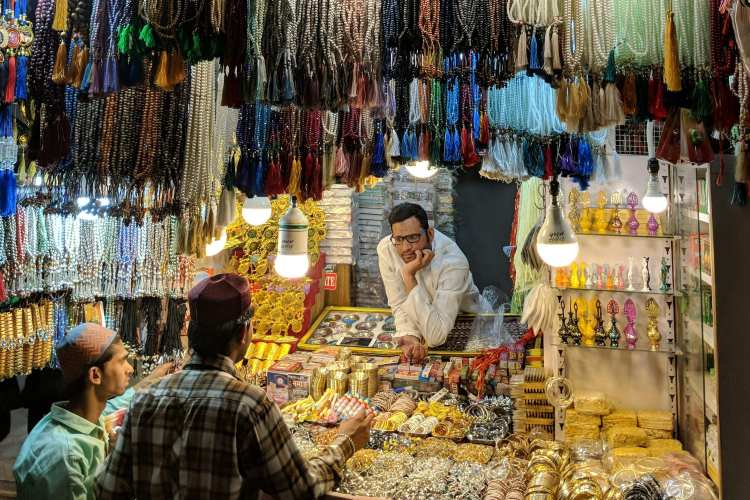
The coming festive season brings more than lights and shopping. With Navratri, Dussehra, and Diwali arriving early, the government has added sparkle with a sweeping reset of the Goods and Services Tax. GST 2.0 collapses the old four-slab system into two: 5% for essentials and 18% for most goods and services. A steep 40% slab has been created for sin and luxury items such as tobacco, liquor, and premium cars.
For families, the immediate effect is visible. Everyday products like soaps, toothpaste, packaged food, chocolates, and bicycles have shifted from the 12–18% range to 5%, reducing monthly expenses. Big-ticket purchases—televisions, refrigerators, air-conditioners, motorcycles, and small cars—have moved from 28% to 18%. Health and life insurance premiums, along with life-saving medicines, have been exempted altogether, easing costs for households that long considered insurance unaffordable.
READ I Rapido’s subscription model disrupts ride-hailing
Stimulus with political overtones
The timing is deliberate. Festivals coincide with a surge in consumption, and policymakers hope to accelerate demand in an economy weighed down by global uncertainty and inflation. Politically, GST 2.0 signals empathy for the middle class, squeezed by stagnant incomes, rising prices, and high taxes.

Every gift carries a price. GST 2.0 simplifies the structure and offers breathing space to consumers and businesses. But it risks eroding government revenues when fiscal consolidation is still a stated goal. The GST Council has flagged likely shortfalls of $16–20 billion, or 0.4% of GDP. State governments that depend heavily on GST compensation could face tighter budgets, forcing cutbacks in health, education, or rural spending. The irony is clear: while consumers enjoy cheaper soap and shampoo today, they may see weaker public services tomorrow.
The consumption bet
The Centre argues that the shortfall will be temporary. Higher consumption should widen the tax base and recover lost revenue. The logic is sound—demand for durables could spur production, jobs, and indirect tax gains. But the assumption is risky. Many Indian households prefer to save against future shocks rather than spend. If additional disposable income is banked instead of spent, the expected buoyancy in revenues may not arrive.
For businesses, the short-term outlook is positive. Lower GST should spur sales in fast-moving consumer goods, autos, and electronics, while a simpler two-slab system reduces disputes and compliance costs. Predictability in tax rates also encourages investment. Yet, tax reforms do not operate in isolation. India has raised tariffs on electronics, furniture, and toys to promote local manufacturing. If input costs remain high due to steep import duties, domestic manufacturers may struggle to pass on the full benefit of GST cuts to consumers.
Luxury taxes and global brands
The new 40% slab on sin and luxury goods presents another dilemma. While it may curb tobacco and liquor consumption, it risks deterring global luxury brands. In a country with rising aspirations, punitive taxes and high import duties could drive affluent consumers abroad, leading to a leakage of demand. A calibrated balance is needed to retain India’s appeal as a consumer market.
Globally, advanced economies are tightening monetary policy to fight inflation, while India is stimulating demand through tax cuts. The divergence could yield a short-term consumption boost but risks widening the fiscal deficit, already near 6% of GDP. If GST revenues shrink, higher government borrowing could raise bond yields and push up capital costs, offsetting the intended growth stimulus.
Uneven benefits of GST reform
Middle-class households gain the most from lower taxes on durables and consumer goods. Low-income households, whose staple items are already exempt or minimally taxed, see little change. Worse, if states cut welfare spending to manage revenue losses, poorer families may end up worse off. The political optics are attractive, but the distributional benefits are skewed.
For investors, predictability matters as much as rates. Frequent shifts in GST slabs risk creating uncertainty about future structures. Will exemptions on insurance and medicines endure, or vanish with electoral cycles? Without clarity, businesses may hesitate to fully pass on benefits, blunting the reform’s impact.
GST 2.0 is at once a festive gift and a fiscal gamble. For households, it provides relief from inflation. For businesses, it promises revival. For the government, it is a political win. But for states and fiscal discipline, it raises tough questions. Policymakers must ensure that reforms are part of a broader strategy that integrates tariffs, revenue mobilisation, and fiscal prudence. Whether GST 2.0 endures as a milestone or proves an expensive indulgence will depend on how well today’s cheer is balanced with tomorrow’s discipline.
Dr Megha Jain is Assistant Professor, Shyam Lal College (M), University of Delhi. Dr Shruti Ashok is Associate Professor, Bennett University, Greater Noida.
